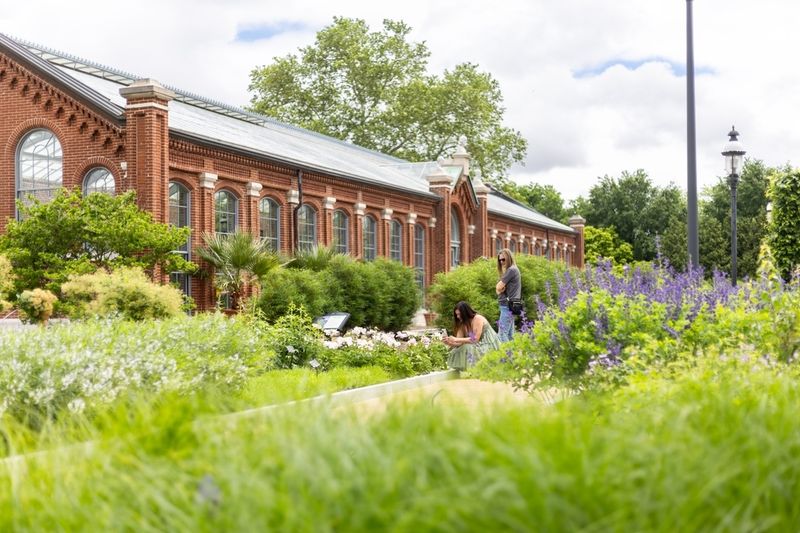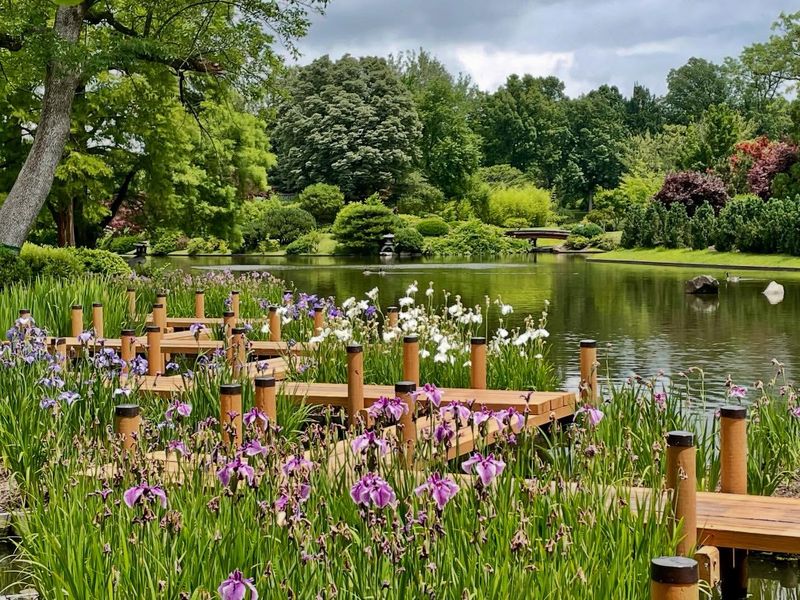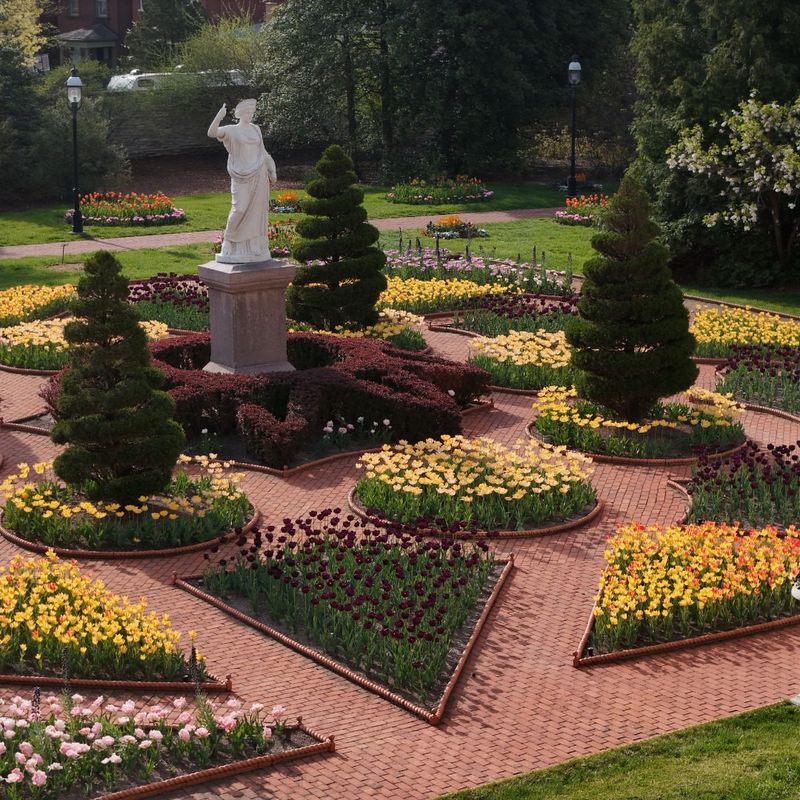The Missouri Botanical Garden is a vibrant reflection of Henry Shaw’s 19th-century dream. Nestled in St. Louis, this 79-acre haven began as his vision for a space where people could connect with nature.
Today, it’s a place of beauty, learning, and quiet wonder. Shaw didn’t just plant a garden—he sowed the seeds of a world-class scientific institution. Visitors come to explore rare plants, stroll through themed gardens, and discover global biodiversity. His legacy lives on in every leaf and lecture.
More than a destination, the garden is a living classroom and sanctuary. It continues to inspire curiosity, conservation, and community. Shaw’s vision still blooms, season after season.
1. From Trading Post To Treasured Garden
In 1819, a young Henry Shaw arrived in St. Louis with just $20,000 and a head full of dreams. The English businessman quickly built a successful hardware company, amassing enough wealth to retire by age 40. Rather than simply enjoying his fortune, Shaw’s European travels sparked a passionate interest in botany and garden design.
The sprawling estate he created opened to the public in 1859, making it one of America’s oldest botanical gardens. Shaw didn’t just build beautiful landscapes – he established a scientific institution with a research library and herbarium that still thrives today.
2. Living Collections That Span Continents
Wandering through the garden feels like taking a global botanical tour without leaving Missouri. The Japanese Garden transports visitors to a serene landscape of carefully pruned trees and reflective ponds, while the 14-acre Climatron houses a tropical rainforest complete with waterfalls and exotic birds.
Seasonal displays transform the garden throughout the year. Spring brings thousands of daffodils and tulips, summer showcases water lilies in the historic pools, and winter illuminates the grounds with spectacular light installations that draw crowds from across the region.
3. Educational Legacy That Grows With Each Generation
School buses regularly arrive at the garden, bringing excited students to hands-on lessons about plant science and ecology. The education center offers programs for all ages, from preschoolers planting their first seeds to master gardener courses for adults passionate about horticulture.
Research remains central to the garden’s mission, just as Shaw intended. Scientists study plant conservation, document biodiversity, and work to protect endangered species. The herbarium contains over 7 million preserved plant specimens, making it one of the largest botanical research collections worldwide.
4. Victorian Architecture Preserves Shaw’s Personal Touch
Henry Shaw’s original 1849 country home still graces the garden grounds, offering visitors a glimpse into the founder’s personal life. The meticulously restored Tower Grove House showcases period furnishings and Shaw’s own belongings, creating a time capsule of Victorian elegance.
Nearby stands the ornate Linnean House, the oldest continuously operating greenhouse west of the Mississippi River. Built in 1882, this stunning glass structure reflects Shaw’s appreciation for classical design and botanical preservation.
These architectural treasures weren’t just beautiful buildings—they represented Shaw’s belief that gardens should combine scientific study with aesthetic beauty, a philosophy that continues to guide the garden’s development more than 160 years later.
5. Scientific Research Fulfills Shaw’s Global Ambitions
When Henry Shaw established his garden, he didn’t just want a pretty place—he envisioned a center for plant science that would benefit humanity. Today, the garden’s research programs span six continents, with scientists documenting plant diversity and fighting extinction through conservation efforts.
The Herbarium houses over 7 million preserved plant specimens, making it one of the largest botanical collections on earth. Researchers use these invaluable resources to discover new species and understand plant relationships.
Shaw’s original library of botanical texts has expanded into a world-class scientific collection with rare manuscripts dating back to the 1400s. His vision of combining beauty with scientific purpose has evolved into a powerhouse of botanical knowledge that addresses global challenges like climate change and food security.






